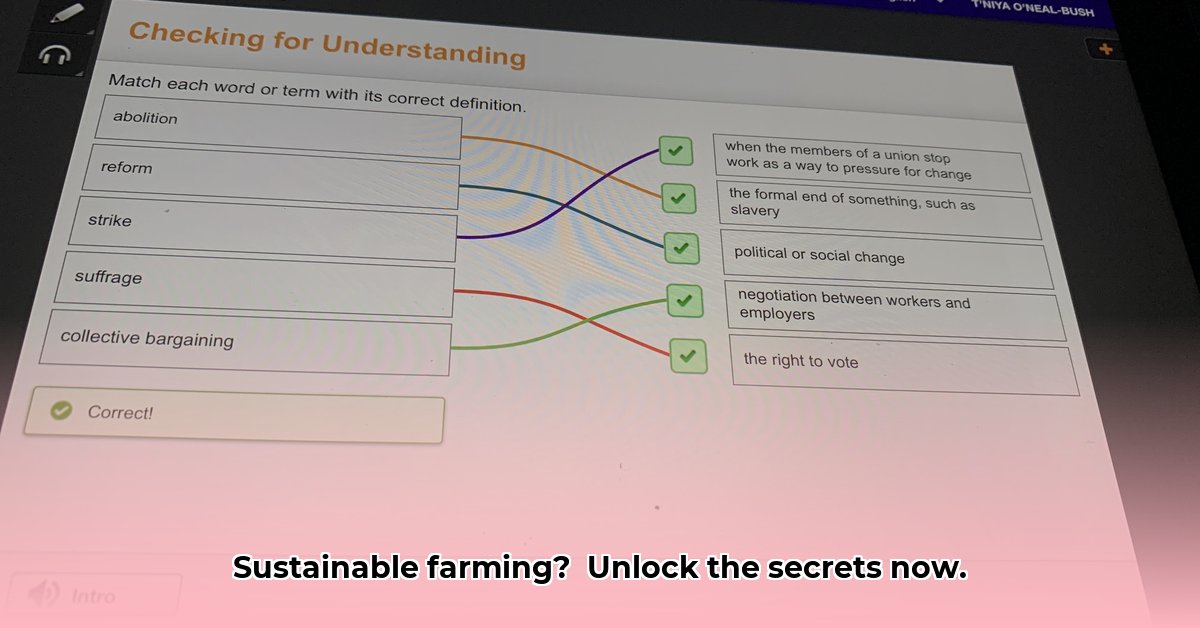
Precision Irrigation: Optimizing Water Use for Sustainable Agriculture
Precision irrigation is revolutionizing how we water crops, moving away from wasteful flood irrigation to targeted, efficient methods. Instead of uniformly watering an entire field, precision irrigation delivers water precisely where and when plants need it most. This targeted approach utilizes technology such as sensors and automated systems to monitor soil moisture and adjust watering accordingly. Think of it as providing each plant with its own personalized hydration plan.
This sophisticated approach offers several key benefits:
- Water Conservation: Precision irrigation dramatically reduces water consumption, often by 25-30%, translating into significant cost savings and a smaller environmental footprint.
- Increased Yields: Well-hydrated plants thrive, leading to higher crop yields (up to 25%) and improved overall crop quality. This boosts profitability and food security.
- Environmental Sustainability: By minimizing water waste and runoff, precision irrigation contributes to a healthier ecosystem and reduced pollution.
Implementing precision irrigation involves careful planning and consideration of several factors:
- System Selection: Choose a system (drip, sprinkler, subsurface) based on your specific needs – soil type, crop, terrain, and budget. Drip irrigation offers high efficiency but may require higher upfront investment, while sprinkler systems offer broader coverage but may be less efficient. Subsurface irrigation is highly efficient but needs specific soil conditions.
- Installation and Calibration: Proper installation is crucial to prevent leaks and malfunctions. Careful calibration ensures that the system delivers the optimal amount of water to your crops.
- Monitoring and Adjustment: Regular monitoring of soil moisture levels using sensors and data analytics allows for ongoing adjustments to irrigation schedules, maximizing efficiency and minimizing waste.
Dr. Anya Sharma, Professor of Agricultural Engineering at the University of California, Davis, emphasizes the importance of ongoing monitoring: "Precision irrigation isn't a set-it-and-forget-it system. Continuous monitoring and adjustments are key to achieving optimal water use efficiency and maximizing its benefits."
While initial investment can be a barrier to entry, the long-term financial and environmental returns often outweigh the initial costs. Government subsidies and financing options can also help alleviate this hurdle. Investing in training for farm personnel is essential for the successful long-term operation and maintenance of these sophisticated systems.
Market Trends: The Growing Demand for Sustainable Farming Practices
The market for sustainably produced food is experiencing explosive growth, driven by a confluence of factors:
- Consumer Preferences: Consumers are increasingly demanding food grown using environmentally friendly and ethical practices. This preference is reflected in their purchasing decisions, creating a strong market pull for sustainable agriculture.
- Government Regulations: Stricter environmental regulations are pushing farmers toward more sustainable practices, further incentivizing adoption.
- Technological Advancements: The emergence of AgTech, including the IoT, AI, and drones, is enabling more precise, efficient, and sustainable farming methods.
- Climate Change Awareness: Growing awareness of climate change and its impact on agriculture is driving demand for resilient and sustainable farming practices.
This shift has created a favorable market environment for sustainable farming practices, creating opportunities for farmers who embrace these techniques. The use of AgTech is particularly crucial in this shift.
AgTech: Driving Innovation in Sustainable Agriculture
Agricultural technology (AgTech) is transforming the farming landscape, driving efficiency and sustainability through:
- Smart Sensors (IoT): These provide real-time data on crop health and soil conditions, allowing for data-driven decision-making in irrigation and nutrient management.
- AI-Powered Analytics: AI algorithms analyze data from various sources to optimize resource use, predict yields, and improve overall farm management.
- Drones: Drones offer efficient and precise application of fertilizers, pesticides, and other inputs, reducing chemical waste and their environmental impact.
- Vertical Farming: This innovative approach maximizes space utilization and resource efficiency in urban environments, allowing for controlled environment agriculture with minimal water consumption.
The adoption of AgTech is not merely a trend; it is a requirement for maintaining competitiveness and achieving long-term sustainability in the agricultural industry.
Key Takeaways:
- The sustainable farming market is booming. Are you ready to capitalize on this trend?
- Precision irrigation drastically reduces water waste and improves crop yields. What are the cost-saving implications for your farm?
- AgTech offers innovative solutions for efficient and sustainable farming practices. How can you integrate these technologies into your operation?